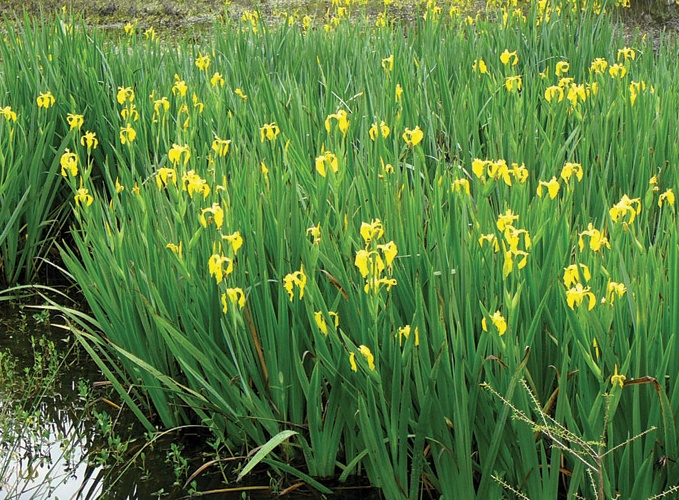Yellow Lis
Home " Helophytes " Yellow Lis
Helophyte filter with Yellow Lis
The Yellow Lis (Latin: Iris Pseudacorus) is often used in helophyte filters. Like many other helophytes, this plant is capable of extracting many nutrients from the water, with nitrates in particular. Under the right conditions, this riparian plant creates a very extensive root system that effectively filters the water. Good for the plant, but also good for your pond!
As the concentration of nutrients in the pond water decreases, algae have less chance. In addition to these properties, which are beneficial for your pond, this helophyte has a beautiful flowering habit. The pretty, yellow flowers create a beautiful and natural-looking bank which also improves water quality!

Use in a helophyte filter
As already mentioned, the Yellow Lis can create a large and widely branched root system. To speed up nutrient uptake, it is possible to plant the Yellow Lis in, for instance, lava peat. Especially in combination with a pump that pumps the water through the lava peat, very good results on pond clarity can be achieved. Of course, it is also possible to plant this bank plant in pond baskets and place them in the pond or, if the soil permits, directly in the bank.
We also use this helophyte within large water bodies and larger helophyte filters and it is excellent for this purpose.
The planting depth of Yellow Lis
The Yellow Lis grows in water that is up to about 30 cm deep.
Dissemination and application of Yellow Lis
The Yellow Lis is native to the Netherlands. You often see them in substantial stocks together along ditches and other water bodies, where they stand out for their beautiful yellow flowers. Unfortunately, their numbers did decline considerably from the late 20th century onwards. The species is therefore protected.
There are also a number of beautiful species available which, especially in the pond, do not look out of place. The Blue Lis is a fine example which, you might have guessed, bears blue flowers. A particularly beautiful species is the Iris laevigata or 'Black Gamecock'. These deep purple, almost black flowers are very distinctive.
Growth height
This riparian plant grows about 80 cm to 100 cm high and grows along the banks of stagnant or slow-flowing water to a depth of about 30 cm.
Flowering time
The Yellow List (or: Iris Pseudacorus) blooms early in the season, from around May to June.
